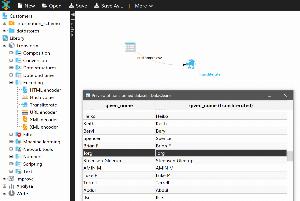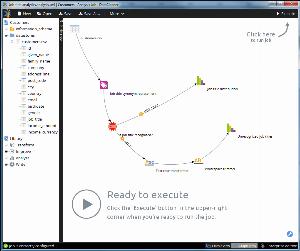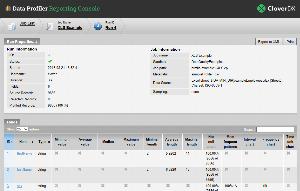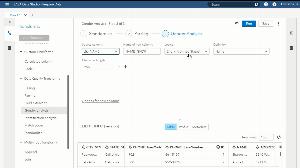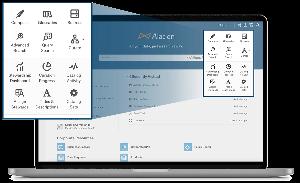Data profiling tools for IBM DB2
Data Profiling tools allow analyzing, monitoring, and reviewing data from existing databases in order to provide critical insights. Data profiling can help organizations improve data quality and decision-making process by identifying problems and addressing them before they arise.
DataCleaner
The heart of DataCleaner is a strong data profiling engine for discovering and analyzing the quality of your data. Find the patterns, missing values, character sets and other characteristics of your data values.
| Access control: |
|
|---|---|
| Commercial: | Free |
| Desktop/Cloud: | Desktop |
| Excel workbooks: |
|
| Flat files: |
|
| Free edition: |
|
| Metadata identification: |
|
| NoSQL sources: |
|
| Runs on: (for desktop): | Linux,Mac OS,Windows |
| Sensitive data discovery: |
|
| SQL sources: |
|
| Statistics of data: | - |
| Tagging data: |
|
CloverDX
CloverDX Data Profiler is a CloverDX module that lets you perform various analyses of your data. It is a part of CloverDX Designer and helps to do various profiling tasks, such as finding the maximum value, median, the most unique value, and many others.
| Access control: |
|
|---|---|
| Commercial: | Commercial |
| Desktop/Cloud: | Desktop |
| Excel workbooks: |
|
| Flat files: |
|
| Free edition: |
|
| Metadata identification: |
|
| NoSQL sources: |
|
| Runs on: (for desktop): | Linux,Mac OS,Windows |
| Sensitive data discovery: |
|
| SQL sources: |
|
| Statistics of data: | Avg,Max,Min,Stdev |
| Tagging data: |
|
SAS Data Quality
SAS Data Quality gives you a single interface to manage the entire data quality life cycle: profiling, standardizing, matching, and monitoring. It lets you validate data against standard measures and customized business rules. Uncover relationships across tables, databases, and source applications. Verify that the data in your tables matches the appropriate description. Establish trends and commonalities in business information and examine numerical trends via mean, median, mode, and standard deviation.
It makes it easy to profile and identify problems, preview data, and set up repeatable processes to maintain a high level of data quality.
| Access control: |
|
|---|---|
| Commercial: | Commercial |
| Desktop/Cloud: | Cloud |
| Excel workbooks: |
|
| Flat files: |
|
| Free edition: |
|
| Metadata identification: |
|
| NoSQL sources: |
|
| Runs on: (for desktop): | - |
| Sensitive data discovery: |
|
| SQL sources: |
|
| Statistics of data: | Avg,Stdev |
| Tagging data: |
|
Alation Data Catalog
Alation’s data profiling capabilities help reduce the time spent in the data exploration phase. With Alation’s data profile, data consumers have the metrics they need to easily discern the quality of any data object. Alation displays important characteristics, statistics, and numerical graphs about the data — enabling data scientists and data engineers to quickly take action. The data profiling now also includes new charts and customizations.
| Access control: |
|
|---|---|
| Commercial: | Commercial |
| Desktop/Cloud: | Cloud |
| Excel workbooks: |
|
| Flat files: |
|
| Free edition: |
|
| Metadata identification: |
|
| NoSQL sources: |
|
| Runs on: (for desktop): | - |
| Sensitive data discovery: |
|
| SQL sources: |
|
| Statistics of data: | - |
| Tagging data: |
|
The use of data profiling tools can lead to higher-quality, more reliable data or eliminating errors that add costs to data-driven projects. Eliminating these costly errors involve processes such as:
• Collecting descriptive statistics.
• Collecting data types, length and recurring patterns.
• Tagging data with keywords, descriptions or categories.
• Performing data quality assessment.
• Discovering metadata and assessing its accuracy.
The most efficient way of handling the data profiling process is to automate it with a data management solution. We prepared a list of open-source data profiling tools that help you carry out the analysis of your data and identify the issues.
 SQL Server
SQL Server
 Oracle
Oracle
 MySQL
MySQL
 PostgreSQL
PostgreSQL
 Amazon Redshift
Amazon Redshift
 Azure SQL Database
Azure SQL Database
 DBT
DBT
 Google Big Query
Google Big Query
 IBM DB2
IBM DB2
 MariaDB
MariaDB
 SAP HANA
SAP HANA
 Snowflake
Snowflake
 SQLite
SQLite
 Teradata
Teradata
 Vertica
Vertica
